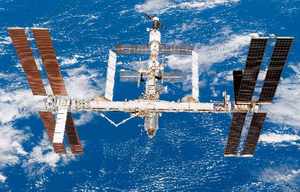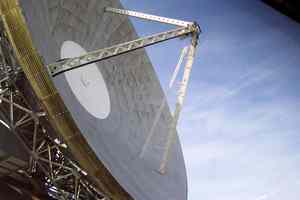NASA Space Shuttle mission STS-120 is scheduled to spend the next two weeks orbiting the earth, with various activities planned including a rendezvous with the International Space Station. NASA provides several video feeds, both by satellite and via the Internet. Much of the video is live, and anyone with a broadband Internet connection can easily look out on the earth below, or into space, or watch the astronauts floating in the shuttle and space station.
Video is available in most popular formats – Windows Media Player, Real Player and Quicktime. Real Audio is available for lower bandwidth or audio only, and captions are available on a Real Player feed as well. One Windows Media feed is optimized for full-screen display, and while all of these options are available for the “public feed,” there are also media and educational feeds available on the same webpage.
Downloading a PDF schedule of events will give you some idea of what’s playing to plan your watching or listening schedule. Sometimes the conversations between the astronauts and ground are entertaining, and at other times a full-screen display of the breathtaking live views of the Earth are a must-see. Even the late-night view of the Houston mission control center is entertaining, as the skeleton crew goes about its business while the crew sleeps.
Live tracking and opportunities to see the Space Shuttle and ISS can be found on NASA’s tracking pages, which require Java capabilities in your web browser to show live status. With the software active in your browser, you can watch the space shuttle and ISS track across continents, see current status and, by hovering your cursor over each space vehicle, find information on the current mission and crew.
If your computer and Internet capabilities are sufficient, you can put the NASA TV and tracking webpage on your screen, and have your own “mission control” on your desktop, watching the crew and the view outside as you see on your tracking window where in the world their orbit has taken them. When mission control announces an “LOS” (loss of signal) period where communications are interrupted, you will see why that is so as the shuttle travels out of range of U.S. tracking stations.
As the shuttle departs the ISS, you will see the individual tracks of the two space vehicles, and when the time comes for the shuttle to land, there is a separate feature on the NASA webpage to determine landing tracks and other information. If you are mathematically inclined, there are plenty of resources to explore Keplerian elements which are useful for tracking satellites as well, another feature of NASA’s tracking software.
From live video with internal and external views in space, to summaries of the day’s events, mission video from NASA is exciting and interesting to watch. Tracking space shuttle Discovery’s path as well as the ISS adds a better perspective of space flight and the speed of orbit. Together, you can feel like you are a part of the United States and International space programs!
“NASA – NASA TV Landing Page”, http://www.nasa.gov/multimedia/nasatv/index.html
“Human Space Flight (HSF) Orbital Tracking”, http://spaceflight.nasa.gov/realdata/tracking/index.html







